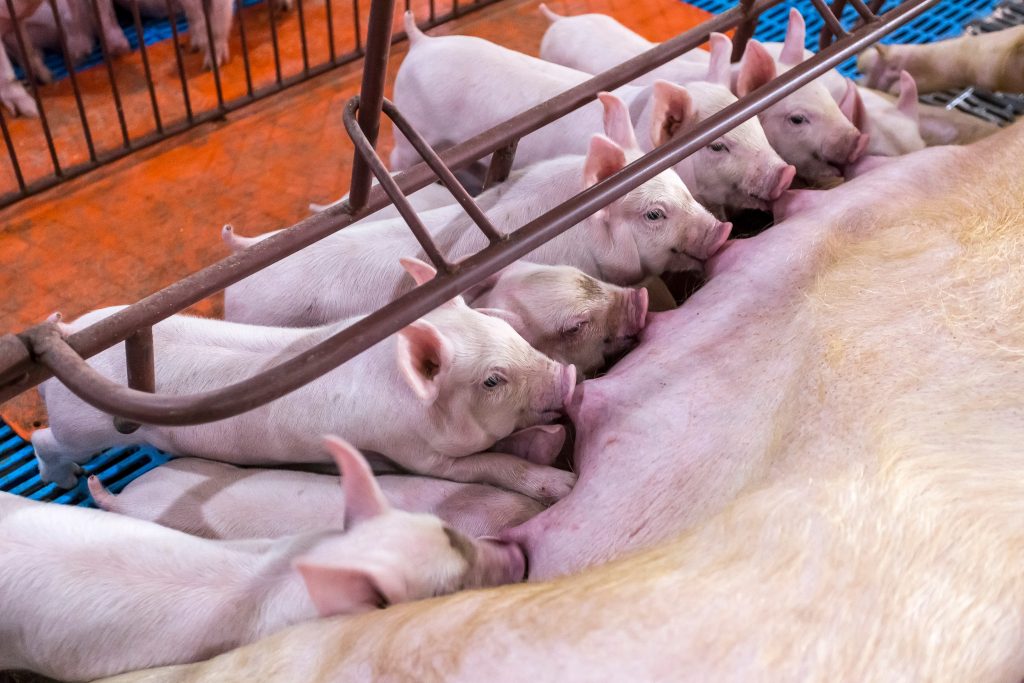The swine industry has made tremendous improvements in terms of the number of piglets born per sow per year; however, emphasis on piglet health and performance is essential to gain the full potential benefit from this improvement.
At Meadow Feeds, we pride ourselves on supplying ‘More than just feed’. This article touches on some of the aspects to consider in piglet management around the farrowing process.
Prioritise the first three days after birth
The hours directly after birth are critical in the life of a pig, and good piglet care can improve piglet survivability. Farm procedures after farrow should be well planned and executed, while the importance of staff training and communication should never be overlooked. In terms of early piglet care, attention should be given within the farrowing unit to ensure piglets receive sufficient colostrum from their own mother during the first eight hours of life.
The method of split-suckling a litter has proven to be particularly useful in large litters. Piglets should be fostered as little as possible and as early as possible after the piglets have received sufficient colostrum. The breed’s genetic guidelines for litter equalisation should be followed. Ensuring that piglets are both dry and warm directly after birth is an area that should always be prioritised. Figure 1 shows that chilled piglets have a much greater mortality rate because these piglets tend to suckle less from the sow and consume a lower amount of colostrum.

during the first week after farrowing (source: Sørensen et al., 2016)
The prevention of crushing
Piglet mortality caused by crushing by the sow is often one of the highest contributors to pre-weaning mortality rates. Any factors that cause stress to the piglet or the sow should be avoided, especially during the first three days after farrowing. In an effort to prevent a high incidence of crushing, attention should be given to the environment in terms of temperature, humidity, and wind drafts. Lame or over-conditioned sows are often a direct concern when considering pre-weaning mortality.
The motivation of creep feed intake
The shift from ensuring sufficient milk intake to stimulating creep feed intake occurs from between seven to ten days of a piglet’s age. It is recommended to start with a small quantity of a high-energy, protein rich, digestible, fresh, and very palatable creep feed. The type and placement of the creep feeder, as well as the creep feed presentation, should all be considered when motivating early creep feed intake. The application of a feeding schedule should always keep in mind that piglets are most active and hungry during the time when the sows are feeding.
Creep feed intake during the suckling phase will stimulate feed consumption in the early stages after weaning, resulting in greater average daily gain post-weaning. In the first 21 days of age, between 150 g and 300 g of creep feed should be sufficient to meet the needs of a piglet. Thereafter, the provision of creep feed should increase significantly on a daily basis during the fourth week.
*References available on request




